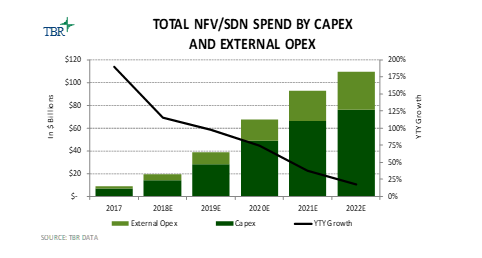Telecom vendor revenues trend upward as operators pull forward 5G investment
According to Technology Business Research, Inc.’s (TBR) 2Q18 Telecom Vendor Benchmark, revenue growth improved for the largest vendors as they capitalized on early 5G investment but saw reduced spend in China. Operators, particularly those in the United States, are pulling forward investment in 5G and deploying small cells to densify networks. However, the RAN market will decline in 2018 as operators in China reduce spend significantly following the conclusion of LTE coverage deployments.
TBR believes Ericsson has staked an early lead in 5G, but Nokia (NYSE: NOK) and Huawei can leverage their end-to-end portfolios to regain share. In 4Q17 and 1Q18 Ericsson (Nasdaq: ERIC) aggressively priced its Ericsson Radio System (ERS), which is software-upgradeable to 5G, undercutting competitors to gain market share ahead of commercial 5G build-outs. Nokia and Huawei remain well positioned in 5G due to their ability to leverage end-to-end portfolios as a one-stop shop for network transformation in the 5G era.
ZTE was banned from sourcing components from the U.S. for part of 2Q18, which drove the company to essentially cease operating, leading to drastically lower revenue and a deep operating loss. The company is once again operating, but its reputation was tarnished, particularly in Western markets.
TBR’s Telecom Vendor Benchmark details and compares the initiatives and tracks the revenue and performance of the largest telecom vendors in segments including infrastructure, services and applications and in geographies including the Americas, EMEA and APAC. The report includes information on market leaders, vendor positioning, vendor market share, key deals, acquisitions, alliances, go-to-market strategies and personnel developments.

